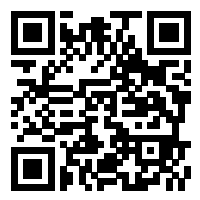What is a Bar Code?
A bar code (often seen as a single word, barcode) is the small image of lines (bars) and spaces that is affixed to retail store items, identification cards, and postal mail to identify a particular product number, person, or location. The code uses a sequence of vertical bars and spaces to represent numbers and other symbols. A bar code symbol typically consists of five parts: a quiet zone, a start character, data characters (including an optional check character), a stop character, and another quiet zone.
An early use of one type of barcode in an industrial context was sponsored by the Association of American Railroads in the late 1960s. Developed by General Telephone and Electronics (GTE) and called KarTrak ACI (Automatic Car Identification), this scheme involved placing colored stripes in various combinations on steel plates which were affixed to the sides of railroad rolling stock. Two plates were used per car, one on each side, with the arrangement of the colored stripes encoding information such as ownership, type of equipment, and identification number.[1] The plates were read by a trackside scanner, located for instance, at the entrance to a classification yard, while the car was moving past.[2] The project was abandoned after about ten years because the system proved unreliable after long-term use.
Barcodes became commercially successful when they were used to automate supermarket checkout systems, a task for which they have become almost universal. Their use has spread to many other tasks that are generically referred to as automatic identification and data capture (AIDC). The very first scanning of the now ubiquitous Universal Product Code (UPC) barcode was on a pack of Wrigley Company chewing gum in June 1974.
Types of barcodes
AusPost 4 State Customer Code
Aztec Code
Aztec Runes
BC412
Channel Code
Codabar
Codablock F
Code 11
Code 128
Code 16K
Code 25
Code 39
Code 39 Extended
Code 49
Code 93
Code 93 Extended
Code One
Compact Aztec Code
Compact PDF417
COOP 2 of 5
Custom 1D symbology
Custom 4 state symbology
Data Matrix
Datalogic 2 of 5
Deutsche Post Identcode
Deutsche Post Leitcode
EAN-13
EAN-13 Composite
EAN-2 (2 digit addon)
EAN-5 (5 digit addon)
EAN-8
EAN-8 Composite
Flattermarken
GS1 Composite 2D Component
GS1 Data Matrix
GS1 DataBar Expanded
GS1 DataBar Expanded Composite
GS1 DataBar Expanded Stacked
GS1 DataBar Expanded Stacked Composite
GS1 DataBar Limited
GS1 DataBar Limited Composite
GS1 DataBar Omnidirectional
GS1 DataBar Omnidirectional Composite
GS1 DataBar Stacked
GS1 DataBar Stacked Composite
GS1 DataBar Stacked Omnidirectional
GS1 DataBar Stacked Omnidirectional Composite
GS1 DataBar Truncated
GS1 DataBar Truncated Composite
GS1 QR Code
GS1-128
GS1-128 Composite
GS1-14
HIBC Codablock F
HIBC Code 128
HIBC Code 39
HIBC Data Matrix
HIBC MicroPDF417
HIBC PDF417
HIBC QR Code
IATA 2 of 5
Industrial 2 of 5
Interleaved 2 of 5 (ITF)
ISBN
ISMN
ISSN
Italian Pharmacode
ITF-14
Japan Post 4 State Customer Code
Matrix 2 of 5
MaxiCode
Micro QR Code
MicroPDF417
Miscellaneous symbols
MSI Modified Plessey
PDF417
Pharmaceutical Binary Code
Pharmazentralnummer (PZN)
Plessey UK
PosiCode
QR Code
Royal Dutch TPG Post KIX
Royal Mail 4 State Customer Code
SSCC-18
Telepen
Telepen Numeric
Two-track Pharmacode
UPC-A
UPC-A Composite
UPC-E
UPC-E Composite
USPS Intelligent Mail
USPS PLANET
USPS POSTNET
What size does a BarCode have to be?
Generally speaking, the larger the BarCode, the easier it is for it to be scanned, however most BarCode reading devices are able to scan images that are small enough to fit on a business card for example. This of course assumes that the quality of image is good.
BarCode File Formats
You can use the following file formats when creating a BarCode::
PNG file
JPG file
PDF file
PNG files work particularly well as they can be resized very easily, meaning that you can easily scale the QR Code depending on where you want to put it.
